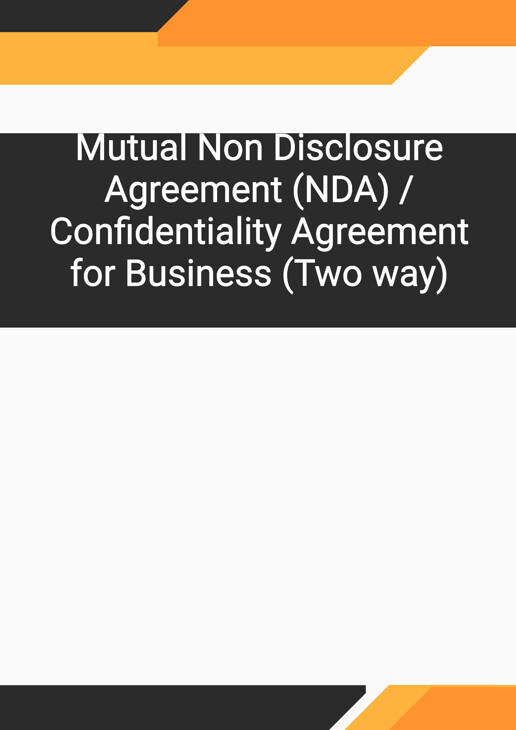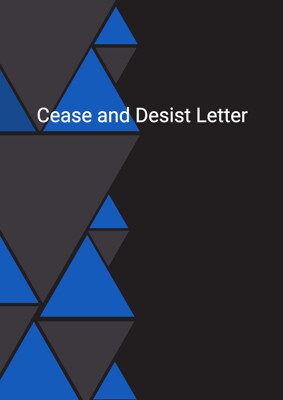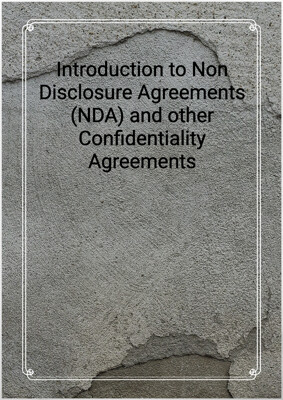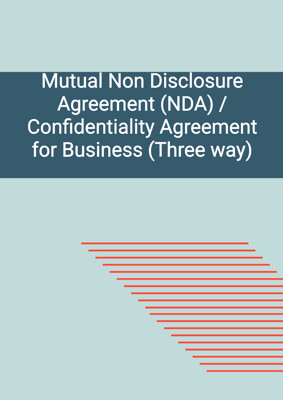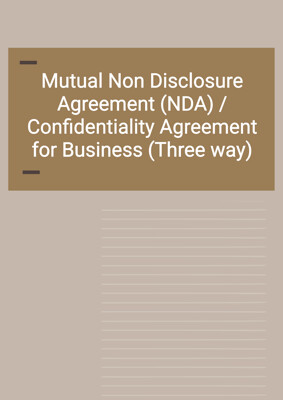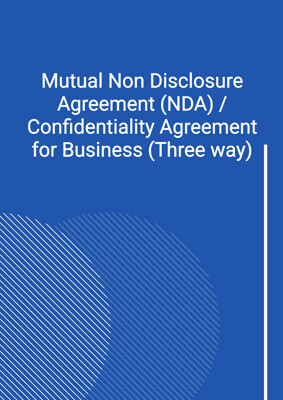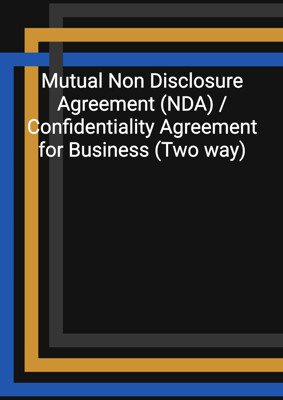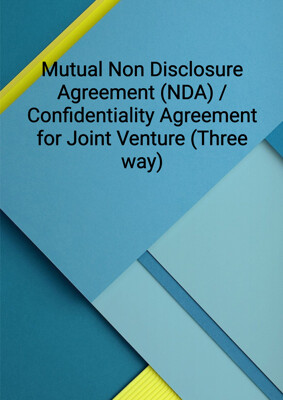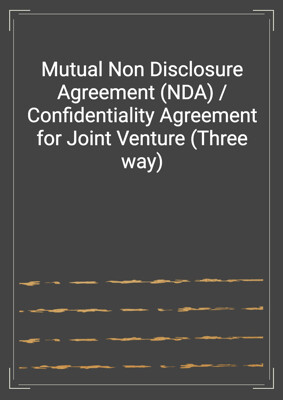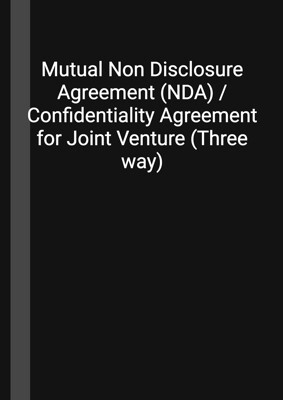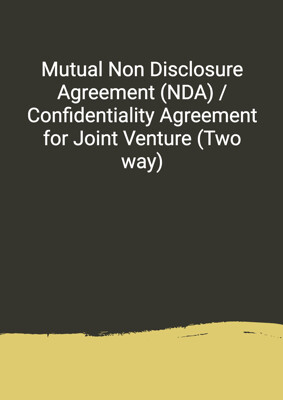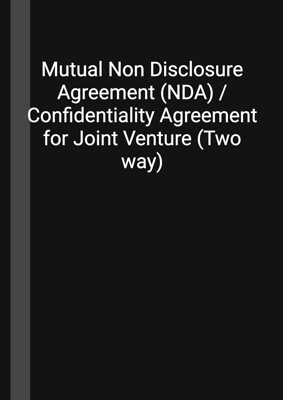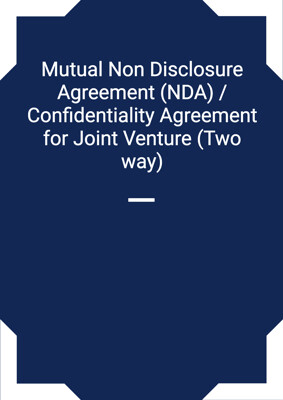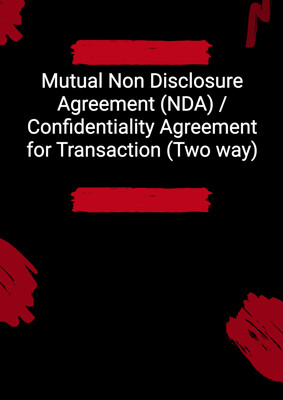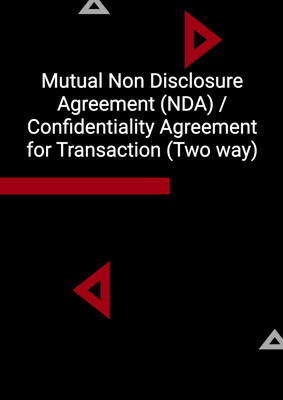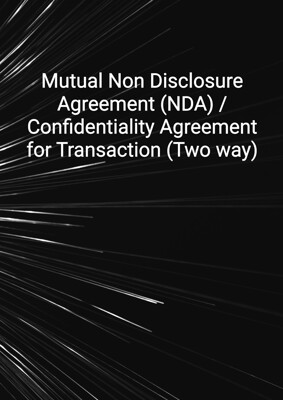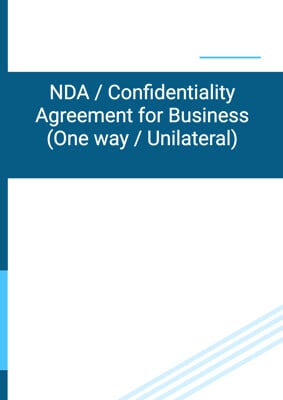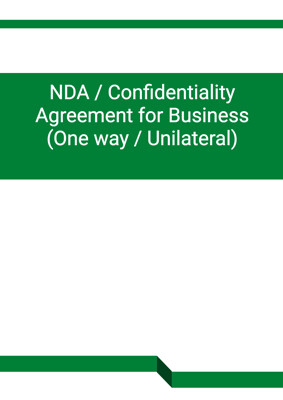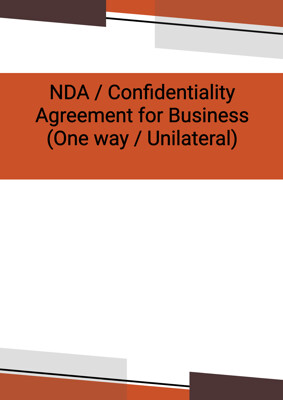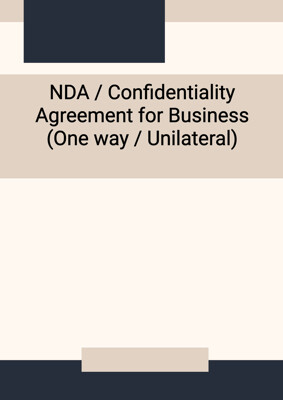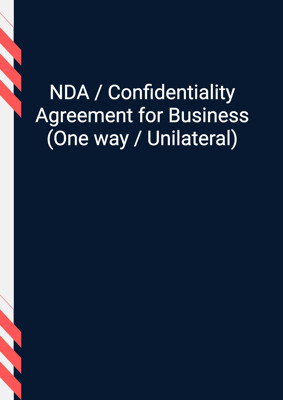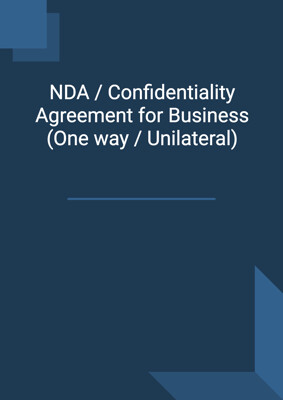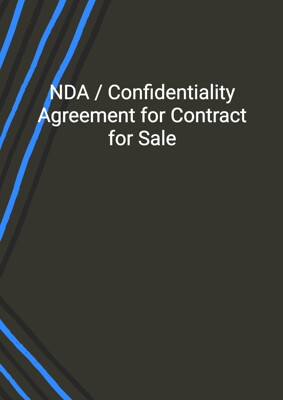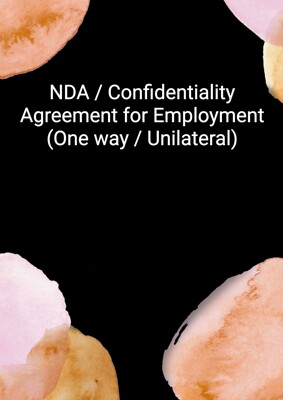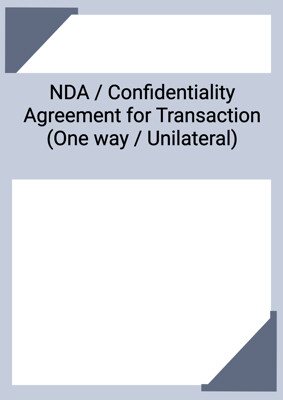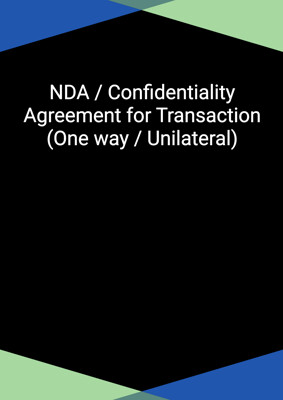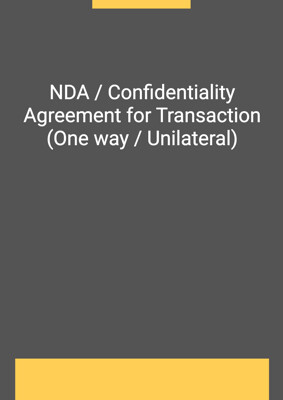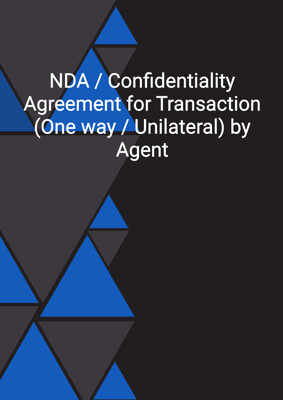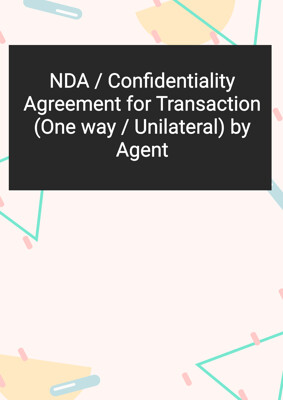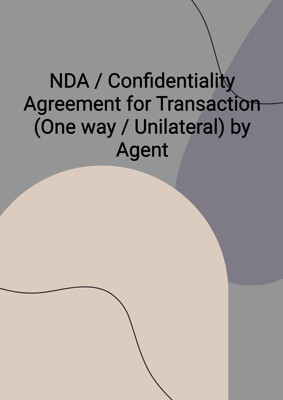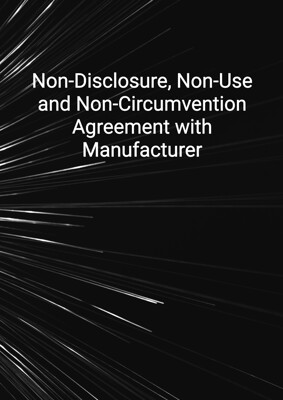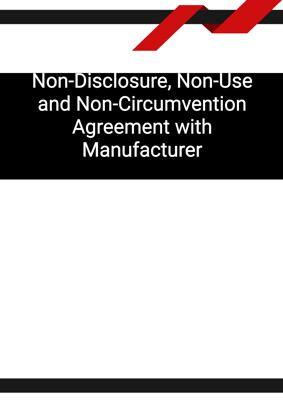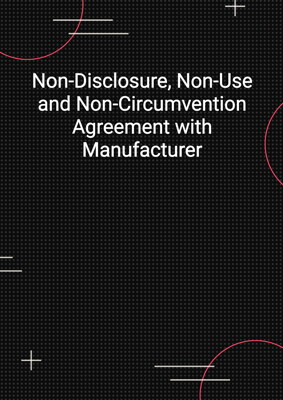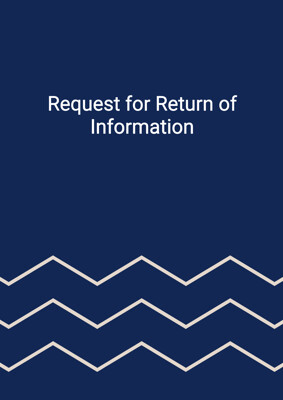How to Tailor the Document for Your Need?
01
Create Document
Fill in the details of the parties. You can click the "Fill with Member’s Information" button to complete it with information saved to your account.
02
Fill Information
Please fill in any additional information by following the step-by-step guide on the left hand side of the preview document and click the "Next" button.
03
Get Document
When you are done, click the "Get Document" button and you can download the document in Word or PDF format.
04
Review Document
Please get all parties to review the document carefully and make any final modifications to ensure that the details are correct before signing the document.
Document Preview
Document Description
The Mutual Non Disclosure Agreement (NDA) / Confidentiality Agreement for Business (Two way) is a document that establishes a confidential relationship between two parties, Party 1 and Party 2. The agreement is entered into on the current date and is important as it allows both parties to exchange proprietary information for the purpose of evaluating their respective interest in establishing a business relationship.
The document begins with an interpretation section, which defines key expressions used throughout the agreement. It clarifies that 'information' refers to any and all information in the possession of either party, including discoveries, ideas, concepts, know-how, designs, specifications, patents, copyrighted materials, and more.
The obligations of confidentiality are outlined in Section 2. Each party undertakes to maintain the confidentiality of the information exchanged and to use it exclusively for the purpose stated in the agreement. They are prohibited from copying, reproducing, or reducing the information to writing, except as necessary for the purpose.
Section 3 focuses on the confidentiality measures that both parties must adhere to. They are required to limit disclosure of the information to approved representatives who require access for the purpose and are bound by confidentiality obligations. The receiving party must keep the information separate from other documents, apply adequate security measures, and keep a written record of all information received.
Exceptions to the confidentiality obligations are outlined in Section 4. The receiving party is not bound by the obligations if the information becomes lawfully available to the public, was previously known to them, was disclosed by a third party, or was independently developed without the information.
Section 5 addresses the return of information. Upon request, each party must return or destroy all documents and materials containing the information and take steps to remove any stored information from computer systems. Both parties remain bound by the confidentiality obligations even after the completion of the purpose.
The agreement includes disclaimers and warranties in Section 6, stating that no rights or obligations other than those expressly granted are implied. The information is not guaranteed to be accurate, and neither party will be liable for its use by the other party. The agreement does not obligate either party to enter into the business relationship contemplated by the purpose.
Confidentiality of the agreement itself is addressed in Section 7. Both parties agree to keep the existence and nature of the agreement confidential, and any announcement or circular relating to the agreement requires approval from both parties.
Remedies for breach of the agreement are outlined in Section 8, including injunction, specific performance, and other equitable relief. Waiver of any provision of the agreement by one party does not constitute a waiver of any other provision.
The agreement cannot be assigned by either party (Section 10) and constitutes the entire agreement between the parties (Section 11). It does not grant any rights under intellectual property of the other party, and the governing law and jurisdiction are specified in Section 13.
Notices and service of the agreement are addressed in Section 14, specifying the methods and timing of delivery. The addresses of both parties are provided for this purpose. Finally, the agreement states that no rights under the agreement can be enforced by third parties (Section 15).
How to use this document?
To use the Mutual Non Disclosure Agreement (NDA) / Confidentiality Agreement for Business (Two way), follow these steps:
1. Review the agreement: Familiarize yourself with the entire agreement to understand its purpose and obligations.
2. Identify the parties: Enter the names and principal places of business of Party 1 and Party 2 in the agreement.
3. Define the information: Determine the confidential information that will be exchanged between the parties and specify it in the agreement.
4. Maintain confidentiality: Both parties must commit to maintaining the confidentiality of the information and using it exclusively for the purpose stated in the agreement.
5. Limit disclosure: Only disclose the information to approved representatives who require access for the purpose and are bound by confidentiality obligations.
6. Separate and secure information: Keep the information separate from other documents and apply adequate security measures to protect it from unauthorized disclosure, copying, or use.
7. Recordkeeping: Keep a written record of all information received, including any copies made.
8. Return or destroy information: Upon request, return or destroy all documents and materials containing the information, and remove any stored information from computer systems.
9. Maintain confidentiality after completion: Both parties remain bound by the confidentiality obligations even after the purpose of the agreement is completed.
10. Understand disclaimers and warranties: Recognize that the information exchanged is not guaranteed to be accurate, and neither party will be liable for its use by the other party.
11. Keep the agreement confidential: Both parties agree to keep the existence and nature of the agreement confidential and obtain approval for any announcements or circulars related to the agreement.
12. Seek legal remedies for breaches: In case of a breach, the disclosing party can seek remedies such as injunction, specific performance, or other equitable relief.
13. Follow notice and service requirements: Serve notices by hand, email, or post in accordance with the specified timelines.
14. Do not assign rights or obligations: Neither party can assign any rights or obligations under the agreement without consent.
15. Understand the entire agreement: The agreement constitutes the entire understanding between the parties and supersedes any prior representations or warranties.
Please note that this guidance is a summary and does not constitute legal advice. It is recommended to consult with a legal professional to ensure compliance with applicable laws and regulations.
